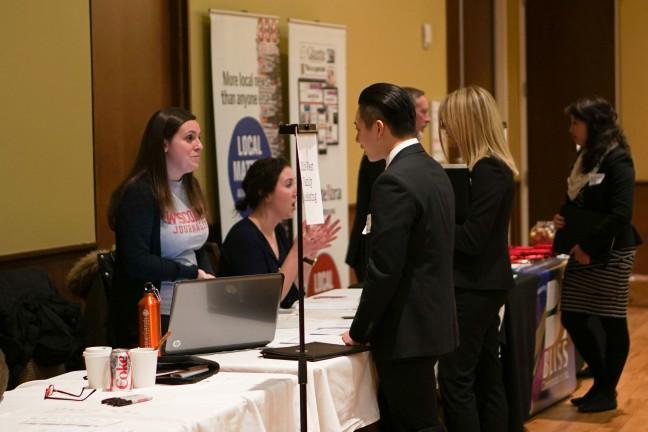The great fallacy of the 1960s asserts that young people emerged from that decade with one singular, sustainable, collective voice — a leftist voice, espousing the doctrine of “make love, not war.” As many historians have pointed out, notably Rick Perlstein in the breathtaking “Before the Storm: Barry Goldwater and the Unmaking of the American Consensus,” a lot was happening on the Right during the ’60s as well. And while the hippies congregated from coast to coast, doing their own thing, William F. Buckley was founding National Review magazine, Barry Goldwater became the patron saint of young counterrevolutionaries everywhere, and the Republican Party was evolving into what would eventually become the party of Ronald Reagan and George W. Bush. Most importantly for campusgoers, chapters of Young Americans for Freedom — an anticommunist, pro-Goldwater organization — emerged across the country.
Apologies to the flower children who came and went, but most post-1960s ideological change within the Democratic Party was entirely due to intra-party reform that democratized delegate selection, accompanied by the institutionalization of direct primaries as more democratic ways of nominating candidates. (The University of Wisconsin’s own professor Byron Shafer has written the definitive account of these reformist efforts, dubbing them a “quiet revolution.”) The Republicans are a different matter entirely. It was the Right, not the Left, whose evolving extremism was successfully spearheaded by the collective voices of individual activists across the country. Barry Goldwater could not have been nominated without YAF, or its adult contemporary, the John Birch Society. Forget Woodstock and anti-Vietnam protests. If you want the best example of an effective, no-nonsense political uprising, look no further than the up-and-coming business-suit-wearing political novices of 1964, manning YAF tables at their local universities, copies of Goldwater’s “The Conscience of a Conservative” tucked under their arms no less fervently than Mao’s red book.
I’m no conservative (though one antagonist on the Madison blogosphere insists I am an “anti-leftist leftist,” whatever that means). But having studied the real history of the 1960s, I had to smile several days ago when I saw a booth on Library Mall advertising a UW chapter of Young Americans for Liberty. Those manning the booth were obviously having fun, asking passersby, “Do you like money?” among other facetious challenges. The lead figure was wearing a beige tweed jacket straight out of 1964. And people were indeed stopping at this booth, most as antagonists, but some perhaps turned on by the message of fiscal conservatism to counteract what can only be described — even by honest proponents like myself — as the socialization of the American banking and health care systems. Political scientists are notorious for always being on the lookout for partisan realignments, for, in Yeats’ words, “rough beasts, their hour come round at last.” As I watched these young gentlemen, whose extremism would make even the College Republicans blush, I asked myself if I was perhaps seeing the first wisps of a sea change. And I believe I am.
A little research reveals Young Americans for Liberty is an offshoot of Students for Ron Paul, the Texas congressman whose anti-war Republican presidential candidacy annoyed mainstream Republicans while enrapturing — in equal numbers — far-right Pat Buchanan-style conservatives and far-left anti-war activists looking for an original voice. YAL’s creed, according to its blog, reads: “As Americans we recognize the God-given natural rights of life, liberty and property set forth by our Founding Fathers. Our country was created to protect the freedoms of the individual and directed by we the people.” A YouTube video for YAL explains democracy was never the intention of the Constitutional Convention, which recognized the injustice of pure majority rule.
Over the past 40 years, the trend among young political activists has been the same: The young Left has fought the older generations of the Right (perhaps because it’s simply more fun), with no thought to their emerging antagonists, focusing attention instead on people whose influence and power will naturally wax and wane (i.e., they’ll die soon.) The young Right, oppositely — since the days of Goldwater onward — has insisted on confronting the young Left in a no-holds-barred battle for future generations of influence. This strategic difference goes far toward explaining the inevitability of the Reagan Revolution and, to a lesser extent, the success of George W. Bush.
Young Americans for Liberty is, as of now, a fledging organization (though I counted 168 campus chapters nationwide on their website). But it has my vote for the right-wing student organization likeliest to effect genuine realignment within the Republican Party as we enter the era of bank takeovers and public option health care reform. Now economic issues, not foreign policy matters, have taken center stage in American politics. Many conservative young people, who will be responsible for whatever realignment takes place, seem utterly uninterested in obsessing about terrorism and foreign policy matters; the Ron Paul line works just fine for them. Ron Paul is, at least from my calculations, a rambling reactionary. But there is a modest chance he — and not Mssrs. Obama and McCain — will emerge as the transcendent figure from the 2008 presidential race.
How does this matter to UW, you ask? Well, take a look around. We are a liberal paradise. I spoke with one professor who confessed to me that in a seminar of 15 students, the lone McCain voter in 2008 felt legitimately ostracized and humiliated. Hell, as a Nader voter I even felt humiliated by some of my Kool-Aid-drinking brethren. The mythology of UW sometimes obscures what’s happening beneath the surface. But if you’re looking for realignments, look at the periphery. Look at the folks who aren’t chalking, but who know people who know people and know how to talk about their ideology in a new and attractive way. Look at the Young Americans for Liberty, reflect on how a very similarly named group practically took over the Republican Party in 1964 (albeit under very different ideological pretenses), reflect on how even at your liberal paradise of a university, a right-wing partisan realignment seems to be underway. (Even the new UW College Republicans leaders are insisting that fiscal positions are the central point of their outreach for 2009-10.) And then reflect on the paradox of all American activism: when it comes to making headway within their own partisan structures, the Right gets things done while the Left simply marches. Message to all groups right, left, and center: Expect this trend to continue for the foreseeable future and modify your strategies accordingly. If you have them, that is.
Eric Schmidt ([email protected]) is a senior majoring in political science.







